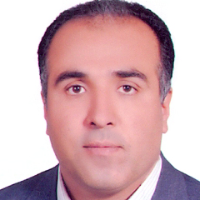The cohesive function of linking tools in Abu'l-Ala'a Ma'ari's Discourse Based on Halliday's Theory (Case Study: The Message of Forgiveness)
Since linking devices are an important phenomenon in the Arabic language and they appear frequently in the sentence and somehow affect the meaning and through them, a large aspect of the textuality of the text is obtained, in this article, we intend to Rely on statistical and descriptive-analytical methods, let's examine and analyze these tools as one of the important factors of text coherence in Maari's book (The Epistle of Forgiveness. One of the most important research findings is that incremental linking tools, in the text pardon letter, add new data to the text without violating the previous information, stating the cause of the previous data, or implying the time. Therefore, these tools provide the reader with a large amount of new information in the text process. These tools are the most important communication tools used in the book's text; their main function is to explain, interpret, and clarify the previous text and sentences. In addition, table temporal linking devices play an important role in advancing the events of the text, linking the next sentence temporally to the previous sentence or sentences and ensuring the continuity of the text. Causal/conditional linking tools are also based on the relationship between cause and effect, or condition and result, but their cohesive property is limited to a small and partial structure and is mostly based on the relationship between two sentences. Compared to other linking tools, comparative conjunction tools are less used and their variety is very small; This shows that Ma'ari did not believe in the means of contraction in his text, and his main focus is on the use of other linking devices; Because the events and incidents of the text of the book Payam Bakshesh are mostly descriptive and explanatory.
-
Comparison of intellectual level stylistics and how the geographical environment affects it in the lyrical poems of Khosrow, Shirin, Laili, and Majnoon Nizami.
Maryam Ghasemi, Hosseinali Pashapasandi *,
Quarterly of Geography (Regional Planing), -
The Difference between Classical and Contemporary Habsyeh (Prison Poetry) in the Representation of Imagined Communities based on the Poetry of Masud Sa'd Salman and Farrokhi Yazdi
Mohila Rezaei Fomani, Hesam Ziaee *,
Journal of Literary Studies,



